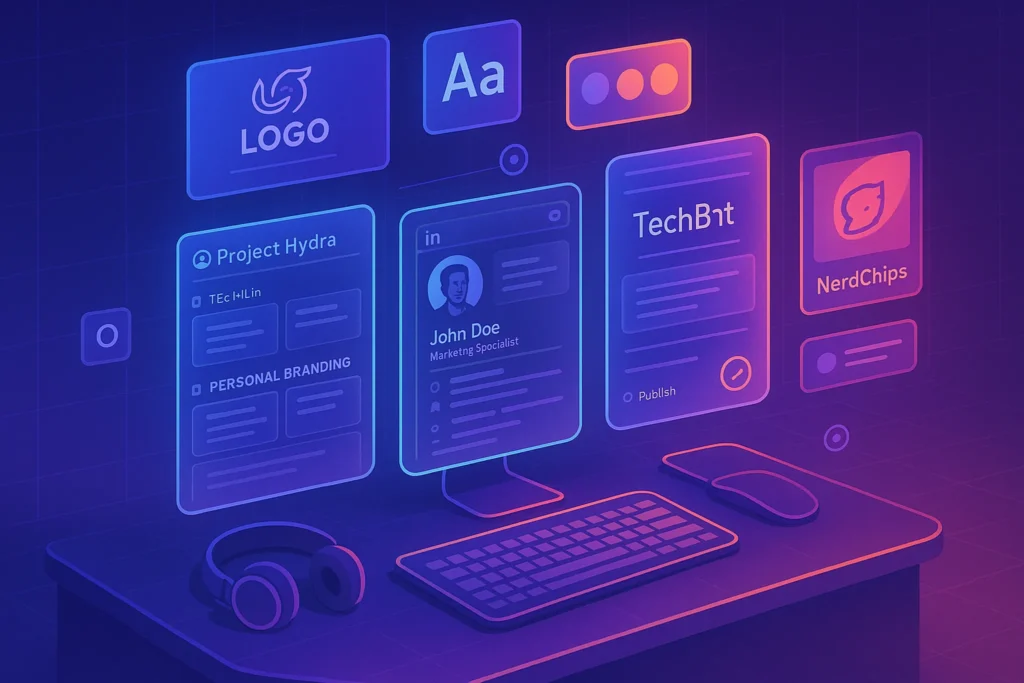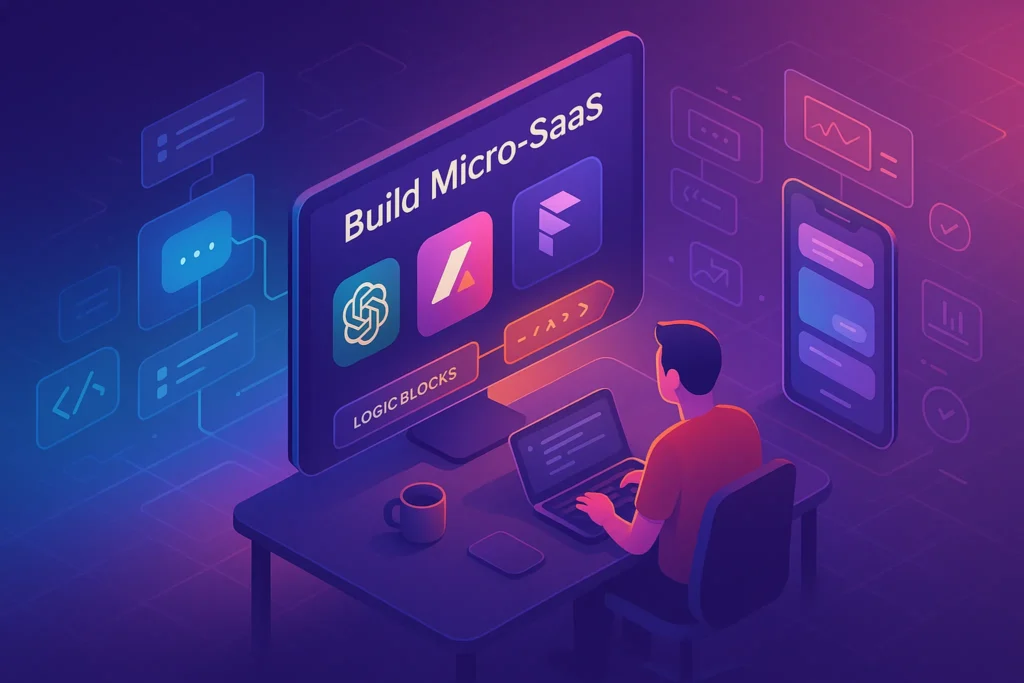-This post may contain affiliate links. If you click on one and make a purchase, I may earn a small commission at no extra cost to you.-
🚀 Introduction: Why Personal Branding Is Your Biggest Asset in 2025
In today’s Creator Economy, your content isn’t just a marketing tool—it’s your brand’s capital. Whether you’re a designer, writer, educator, or founder, the way you show up online defines your opportunities. People no longer buy just products—they buy trust, style, and story.
This post will show you how to transform your content into a consistent personal brand across platforms like LinkedIn, Substack, and even Notion. We’ll explore both strategic steps and smart tools—from building visual identity with Canva to managing your presence with AI-powered assistants.
If you’re a creator serious about long-term success, this guide is your blueprint.
🧱 Understand the Creator Economy Shift
The creator economy isn’t just a trend—it’s the new normal. What makes it so powerful is the way it merges individual expression with business models. Creators can now monetize not just what they do, but who they are. Whether it’s a design style, a specific worldview, or a unique way of explaining things, audiences gravitate toward personalities as much as content.
Monetization is no longer gated behind follower counts. Platforms like Gumroad, Buy Me a Coffee, and Patreon allow even micro-creators to earn directly from their communities. The new game is depth of connection, not just reach.
Understanding this shift helps you stop thinking like a freelancer and start thinking like a media brand. Your tweets are headlines. Your blog is your archive. Your portfolio is your storefront. And AI can be your personal intern.
Thanks to platforms like YouTube, Ghost, and X, creators now have the infrastructure to grow without needing permission from traditional gatekeepers. You’re no longer just a freelancer or an influencer—you’re becoming a one-person media brand.
That’s why tools designed for solo operators—like the best AI tools for solopreneurs—have become central to building sustainable momentum.
In this landscape, even a single tweet or video can become part of your public résumé. That’s why consistency and clarity in your brand identity matter more than ever.
We’re no longer in a world where only celebrities or CEOs need a personal brand. With the rise of platforms like X, YouTube, Ghost, and Patreon, everyone is a media company now.
-
Access is democratized: Anyone with value to offer can build an audience.
-
Niches matter: Micro-brands are outperforming mainstream ones.
-
Trust scales through content: Consistency > virality.
This shift means you are the product. Your blog post, tweet, or podcast becomes a piece of digital capital that builds your presence—bit by bit.
🎯 Think of your content as “proof of expertise” instead of just promotion.
✍️ Define Your Personal Brand Pillars
Getting clarity on your brand pillars doesn’t mean locking yourself into a rigid persona. Instead, it’s about having a consistent lens through which your content is filtered. For instance, if your voice is empathetic and encouraging, every tweet, video, or blog should echo that emotional tone—even when covering technical topics.
A great exercise is to write a “Brand Identity One-Pager” where you outline:
-
3 adjectives that describe your tone
-
2 key themes you often speak on
-
1 promise your content always delivers
Pair this with visual templates using Canva or Figma. For deeper positioning work, tools like BrandScript or StoryBrand frameworks can help articulate your value in audience-facing language.
This exercise not only improves content alignment but makes it easier for collaborators, sponsors, or clients to quickly grasp your essence.
Before you hit publish, you need clarity on who you are, what you stand for, and how you deliver value. These three pillars shape your brand:
-
Voice – Are you formal, quirky, educational, provocative?
-
Visuals – What colors, fonts, or layout express your vibe?
-
Value – What problems do you solve or perspectives do you bring?
Use tools like Canva to experiment with design. Tools like Notion or Obsidian can help you build a personal knowledge base that reinforces your message.
These pillars shape how people perceive you—even before they meet you. Tools like Canva are perfect for refining your visual language, while Notion can serve as your digital brain, helping you store and organize your best thinking.
And if you’re looking to automate parts of this system, take a look at how Niche Automation Tools can streamline your personal brand engine without making it feel robotic.
🧠 Nerd Tip: Use AI tools like Brandmark or Looka to generate logos, color palettes, and brand kits in minutes.
🧰 Choose the Right Platforms to Show Up Consistently
Choosing the right platforms isn’t just about where your audience hangs out—it’s also about how you naturally express yourself. If you love speaking off the cuff, YouTube Shorts or X might be ideal. If you think best in long form, a Ghost blog or Substack newsletter might let your ideas breathe.
More importantly, each platform serves a different function in the brand funnel:
-
Discovery: X, TikTok, Instagram Reels
-
Trust-building: YouTube, LinkedIn
-
Conversion: Newsletter, Website, DM channels
A smart move is to repurpose the same content across tiers, adapting tone and format to suit each layer. For example, a long-form blog post can become a LinkedIn carousel, an X thread, and a Substack email—each reinforcing the same core message.
The secret is to choose 1–2 primary platforms to own and a couple of secondary ones to syndicate. Trying to master all at once only leads to burnout.
You don’t need to be everywhere—but you do need to be consistent somewhere.
-
LinkedIn: Ideal for thought leadership & professional positioning.
-
Substack/Ghost: For long-form storytelling and newsletters.
-
YouTube/X: Fast-paced, viral potential with massive reach.
-
Personal Website: Your owned asset and ultimate content hub.
Think of each platform as a different layer of your identity. For instance, your Ghost blog might hold your essays, while LinkedIn houses your career insights and portfolio.
If you’re already active on social platforms but not seeing results, make sure you’re following modern Social Media Marketing principles, not outdated engagement hacks.
🤖 Use AI to Scale Your Brand, Not Dilute It
AI doesn’t just save time—it unlocks entirely new workflows. For instance, you can now generate a week’s worth of tweets or LinkedIn posts in one sitting using tools like Typefully + GPT-4. Or draft entire newsletters using Lex.page, then personalize them manually.
AI also helps with visual consistency. Tools like Canva Magic Design and Designify let you generate banners, thumbnails, or brand images that match your aesthetic without hiring a designer.
Want to track how your brand voice evolves? Tools like Narrato or Writer.com can analyze your tone and suggest improvements to stay on-brand.
And as multilingual branding grows, translation AIs like DeepL or Localazy make it possible to expand globally while sounding human. The point isn’t to automate everything—it’s to make your genius more scalable.
AI isn’t a threat to authenticity—it’s an amplifier. Smart creators are already using AI to:
-
Write first drafts of bios or posts using tools like Copy.ai or Jasper.
-
Manage scheduling and posting with Buffer AI or Publer.
-
Auto-generate content variations for A/B testing.
AI isn’t here to replace you—it’s here to amplify your originality. Smart creators now rely on AI tools not just for writing, but also for research, ideation, and distribution.
For example, you can draft engaging LinkedIn posts faster using the best AI writing tools for bloggers, or even build custom chatbots that represent your brand tone using tools like those in our guide on the top AI chatbot builders.
The key is to keep your brand message intact while using AI to remove bottlenecks.
AI assistants can help you maintain presence while you focus on depth. The key is still human input—AI just saves the grunt work.
🧠 Turn Content into Long-Term Brand Assets
A Brand Library isn’t just a collection—it’s a strategic trust-building asset. Imagine a new visitor discovering your site and instantly accessing your best ideas, top tutorials, and client success stories—all in one place. That’s authority on demand.
You can structure your Brand Library inside Notion, Super, or Tally.so using categories like:
-
🎓 “Start Here” – onboarding content for new followers
-
🧠 “Deep Dives” – long-form essays, playbooks, frameworks
-
📊 “Case Studies” – client wins or project walkthroughs
-
🔄 “Media & Talks” – podcasts, interviews, conference talks
Each content type reinforces different aspects of your brand: your intellect, credibility, personality, or social proof. Over time, this turns you into not just a creator—but a library of insight, which brands and fans return to over and over again.
Every tweet, blog post, video, or podcast you create can become part of your Brand Archive. Use tools like:
-
Notion or Super.so to organize your public ideas into a content hub.
-
Read.cv or Polywork to present dynamic digital resumes.
-
Substack Reposts or Twitter Threads as evergreen content vaults.
🔁 Format Variation Layer: Create a Brand Library with sections like:
My Best Ideas
Evergreen How-Tos
Testimonials / Proof
Media / Interviews
Over time, your brand library becomes proof of credibility, useful not just for your audience, but for partnerships, collaborations, and clients.
🧨 Bonus: Pro Moves to Accelerate Your Brand Growth
If you’ve already nailed the basics, these high-leverage strategies can help you accelerate your personal brand growth and stand out in a noisy creator market:
1. Use a “Content Anchor” Series
Create a recurring theme—like a weekly Q&A, teardown, or newsletter column—that gives your audience a reason to return. This becomes a signature and builds habit.
2. Bundle Your Best Content
Don’t let your best posts fade into the feed. Use tools like Gumroad or Notion to turn blog series, Twitter threads, or tutorials into downloadable eBooks, toolkits, or swipe files.
3. Implement a Personal CRM
Use Airtable, Clay, or Dex to track interactions with collaborators, clients, and superfans. Branding isn’t just broadcasting—it’s relationship management.
4. Collaborate with Micro-Creators
You don’t need influencers. Partner with creators in adjacent niches for cross-posts, guest newsletters, or co-hosted streams. These collabs build trust and introduce you to fresh audiences.
5. Run a 30-Day Public Branding Sprint
For 30 days, show up daily with a short-form insight, process share, or value post. Tag it as a series and document your learnings. This creates momentum and boosts visibility fast.
💡 You’re not building a brand in secret. You’re building it in public. That’s the whole point.
❓ FAQ: Nerds Ask, We Answer
🧠 Nerd Verdict
In 2025 and beyond, your content is your brand equity. Each post compounds trust, reach, and influence—if it’s guided by clarity and consistency. You don’t need to chase every trend or be online 24/7. You just need to be deliberately visible in the right places, using tools that multiply your effort.
The Creator Economy rewards those who know who they are, say it clearly, and show up consistently. Make every post count.
💬 Would You Bite?
What part of your online presence feels most “off-brand” right now?
Reply in the comments—let’s refine it together. 👇



